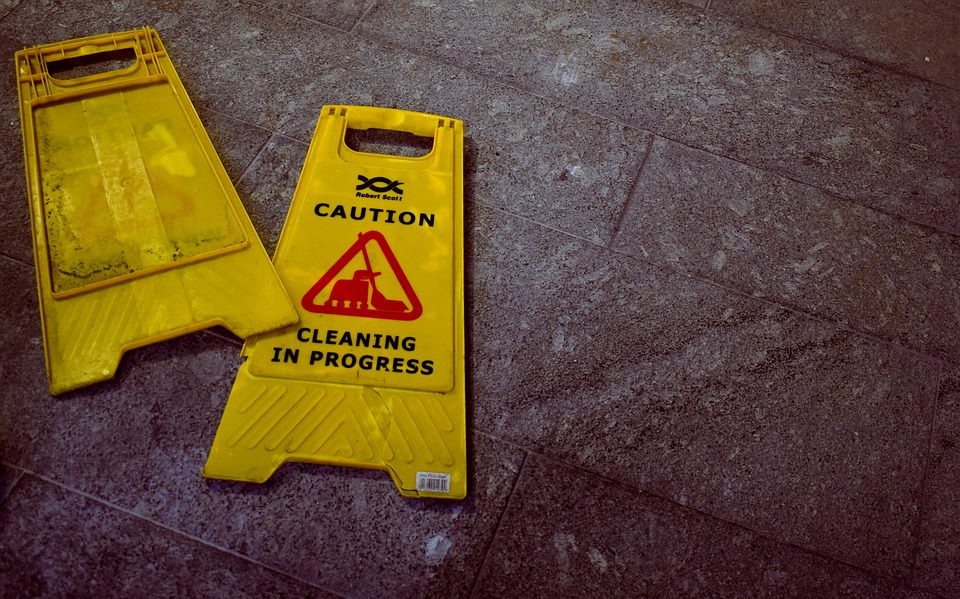Blog
Slips, Trips and Falls Costing Employers £73m in Annual Leave

New research has further highlighted the hidden cost to employers of slips, trips and falls at work.
According to the Health and Safety Executive (HSE), slip, trip and fall hazards in the workplace are responsible for up to 40% of workplace injuries. Aside from the incalculable cost to the individual (lost income, pain suffered, reduced quality of life, etc.), the HSE report that slips, trips and falls cost employers over £500m per year.
While this sum visibly includes damages, administration and insurance costs, there are additional hidden costs related to:
- Product, plant and equipment damage;
- Production delays;
- Overtime working, temporary labour and training;
- Loss of expertise and experience;
- Investigation time;
- Fines; and
- Loss of image.
Do you need support?
Speak to us for an honest, no obligation chat on:
0345 226 8393 Lines are open 9am – 5pm
Wasted Cost
Legal responsibility
Aside from costs, employers also have a legal responsibility to manage workplace slips, trips and falls:
- The Health and Safety at Work etc Act 1974 requires employers ensure the health and safety of all employees and anyone else affected by their activity. Risk must be reduced as far as ‘reasonably practicable’.
- Under the Management of Health and Safety at Work Regulations 1999, employers must assess slip, trip and fall risks and take necessary action to address them.
- The Workplace (Health, Safety and Welfare) Regulations 1992 require that the condition and cleanliness of workplace floors allows people to move around safely.
Top tips for reducing slip, trip and fall hazards
Despite all of this, workplace slip, trip and fall injuries are some of the easiest to prevent. As always, seeking Health & Safety advice from an expert is a good place to start.
Ten top tips to significantly manage risk and reduce costs are:
- Walkways – Areas where there is footfall should be clean, well-maintained and free from clutter. This will greatly reduce the potential for spills to create dangerous slipping hazards and will reduce the likelihood of someone tripping over an object left lying around. This is especially relevant in the hospitality sector.
- Lighting – Well-lit premises have a reduced chance of incidents, so check that your workplace has adequate lighting. Light commonplace areas, both inside and outside, where slips trips and falls are likely.
- Signs – Highlight hazards/increase awareness by placing clear health and safety signs to indicate steps, gaps or uneven ground.
- Stairs – Stairs are one of the most common fall areas in workplaces, so additional care is required. Stairs should have handrails and stairwells should be well-lit and clear of obstacles. Consider using reflective tape to mark the top and bottom of stairs and make sure that any carpets or rugs are safe and secure.
- Footwear – Sensible footwear should be worn at work at all times. Make sure employees know what footwear is safety-appropriate. Consider providing slip-resistant footwear – the cost of an accident may be greater.
- Step ladders – Reduce the possibility of workers climbing on chairs or tables to reach heights by providing appropriate equipment such as step ladders.
- Manage wires – Wires left out in the open present obstacles that can cause injury. Place electrical wires and/or telephone cables so that they do not lie in travelled areas.
- Floors – Regularly check floors to make sure they are in good condition. Quickly repairing cracks and holes will reduce the risk of incidents. While waiting for an area to be fixed, place warning signs to highlight the danger.
- Cabinets – Open filing cabinets or anything else projecting out into a person’s path may cause a fall. Remind staff to close all cabinets and drawers when not in use.
- Spills – Almost all slips involve liquid spillages. The HSE say that people rarely slip on a clean, dry floor. Clean up any spills at the earliest opportunity and place warning signs around the hazard.
Prevention will be more effective if employees understand the problem and take slips, trips and falls seriously. Encourage a ‘see it, sort it’ policy.
